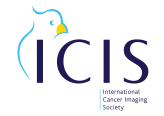People
Prof. Joel Saltz

Dr. Joel Saltz is a leader in research on advanced information technologies for large scale data science and biomedical/scientific research. He has developed innovative pathology informatics methods, including: the first published whole slide virtual microscope system; pioneering pathology computer-aided diagnosis techniques; and methods for decomposing pathology images into features and linking those features to cancer “omics”, response to treatment and outcome. He has broken new ground in big data through development of the filter-stream based DataCutter system, the map-reduce style Active Data Repository and the inspector-executor runtime compiler framework. He has also been an active contributor in clinical informatics, having developed predictive models for hospital readmissions, point of care laboratory testing quality assurance systems, decision support systems for electrophoresis interpretation and graphical user interfaces to support clinical data warehouse queries. Dr. Saltz has been a pioneer in establishing the field of biomedical informatics; he founded and built two highly successful departments of biomedical informatics, one at Ohio State University and one at Emory University. In 2013, he came to Stony Brook as Vice President for Clinical Informatics and Founding Department Chair of Biomedical Informatics – to create a living laboratory for biomedical informatics and to create a third unique biomedical informatics department dually housed in the School of Medicine and the College of Engineering. Dr. Saltz is trained both as a computer scientist and as a physician through the MSTP program at Duke University. He has deep experience in computer science, having served on the computer science faculties at Yale University and the University of Maryland. He completed his residency in clinical pathology at Johns Hopkins University and he is a practicing, board-certified clinical pathologist.
In 2021, Dr. Joel Saltz has been appointed as Vice Chair for Laboratory Initiatives and Digital Medicine in the Department of Pathology.
